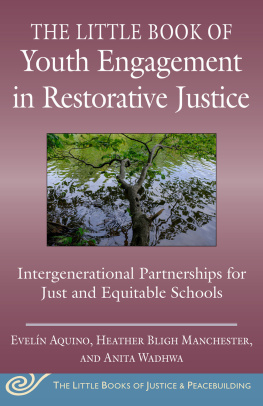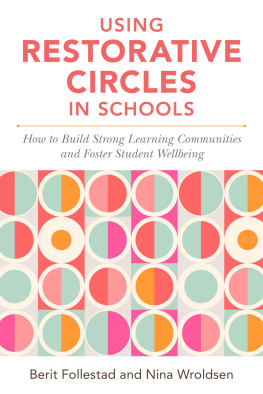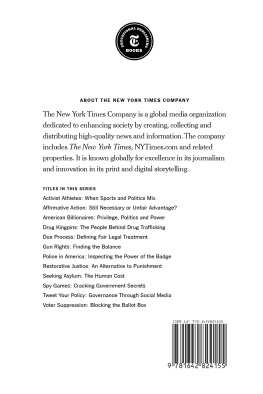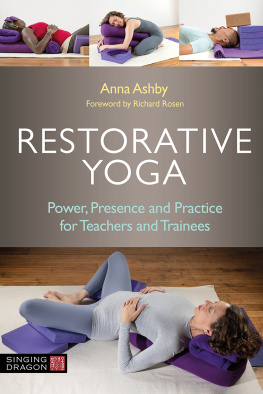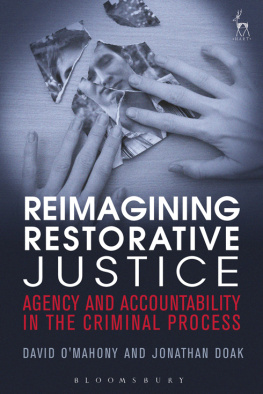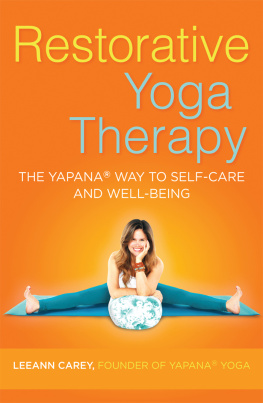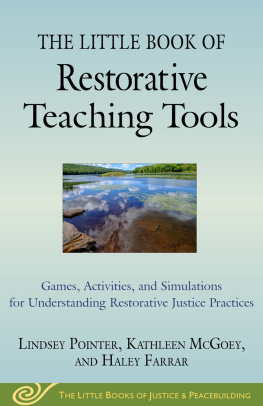RESTORATIVE
THEORY IN
PRACTICE
by the same author
Just Care
Restorative Justice Approaches to Working with Children in Public Care
Belinda Hopkins
Foreword by Jonathan Stanley
ISBN 978 1 84310 981 5
eISBN 978 0 85700 087 3
Just Schools
A Whole School Approach to Restorative Justice
Belinda Hopkins
ISBN 978 1 84310 132 1
eISBN 978 1 84642 432 8
of related interest
The Forgiveness Project
Stories for a Vengeful Age
Marina Cantacuzino
Foreword by Archbishop Emeritus Desmond Tutu
Foreword by Alexander McCall Smith
ISBN 978 1 84905 566 6
eISBN 978 1 78450 006 1
Restorative Justice
How It Works
Marian Liebmann
ISBN 978 1 84310 074 4
eISBN 978 1 84642 631 5
The Psychology of Emotion in Restorative Practice
How Affect Script Psychology Explains How and Why Restorative Practice Works
Edited by Vernon C. Kelly, Jr. and Margaret Thorsborne
ISBN 978 1 84905 974 9
eISBN 978 0 85700 866 4
Implementing Restorative Practice in Schools
A Practical Guide to Transforming School Communities
Margaret Thorsborne and Peta Blood
Foreword by Graham Robb
ISBN 978 1 84905 377 8
eISBN 978 0 85700 737 7
RESTORATIVE
THEORY IN
PRACTICE
INSIGHTS INTO WHAT
WORKS AND WHY
EDITED BY
BELINDA HOPKINS
Jessica Kingsley Publishers
London and Philadelphia
Parts of Chapter 3 are reproduced with permission from Hart Publishing, an imprint of Bloomsbury Publishing PLc: Vaandering, D. (2013) A window on relationships: Reflecting critically on current restorative justice theory. Restorative Justice: An International Journal 1 , 3, 311333.
First published in 2016
by Jessica Kingsley Publishers
73 Collier Street
London N1 9BE, UK
and
400 Market Street, Suite 400
Philadelphia, PA 19106, USA
www.jkp.com
Copyright Introduction, Chapter 11 and Conclusion Belinda Hopkins 2016
Copyright Chapters 110 Jessica Kingsley Publishers 2016
Front cover image source: Ingimage.
All rights reserved. No part of this publication may be reproduced in any material form (including photocopying or storing it in any medium by electronic means and whether or not transiently or incidentally to some other use of this publication) without the written permission of the copyright owner except in accordance with the provisions of the Copyright, Designs and Patents Act 1988 or under the terms of a licence issued by the Copyright Licensing Agency Ltd, Saffron House, 610 Kirby Street, London EC1N 8TS. Applications for the copyright owners written permission to reproduce any part of this publication should be addressed to the publisher.
Warning: The doing of an unauthorised act in relation to a copyright work may result in both a civil claim for damages and criminal prosecution.
Library of Congress Cataloging in Publication Data
Restorative theory in practice : insights into what works and why / edited by Belinda Hopkins.
pages cm
Includes bibliographical references and index.
ISBN 978-1-84905-468-3 (alk. paper)
1. Restorative justice. 2. Juvenile delinquency--Psychological aspects. I. Hopkins, Belinda, 1956- editor.
HV8688.R497 2016
364.68--dc23
2015012620
British Library Cataloguing in Publication Data
A CIP catalogue record for this book is available from the British Library
ISBN 978 1 84905 468 3
eISBN 978 0 85700 847 3
Contents
Introduction
BELINDA HOPKINS
Who is the book for?
This is a book for all those who are fascinated by restorative practice and especially by what makes it so effective, often in situations where without it things may have got much worse. This fascination may have come for professional reasons, from the desire to gain a deeper understanding of what is actually going on when people come together in what are called restorative encounters. Might there be some essential elements to such an encounter without which the process would fail to address the needs of all those present? Might there be other factors that enhance the process in certain cases but not others? Is there a set of necessary, if not always sufficient, conditions under which restorative interventions are more likely to be successful in the eyes of those involved? All these are questions for restorative practitioners and for those who, like myself, combine hands-on restorative practice with training and trainer development. For all of us, on-going professional development involves deepening our understanding of what we do, how we do it, and how we can do it better, for the sake of those we serve whether those harmed or those responsible for the harm (or both, as is so often the case).
This book is not simply for practitioners however. Some readers will be among the rapidly growing community of restorative academics, evaluators and researchers, keen to deepen their own understanding of the theoretical underpinnings of restorative practice, and perhaps make links to other fields and other practices. New ways to look at restorative practice can shed light on so many aspects of the human condition. Such readers may view restorative processes through the lens of criminology, psychology, psychiatry, sociology, biology, neuroscience, linguistics, anthropology or any combination of these. All these lenses, and more besides, can help us to understand what people are going through in the aftermath of harmful behaviours. It may become clearer how restorative responses provide the answer to questions not previously even fully understood.
A brief history of restorative justice
The field of restorative justice, approaches and practices is so diverse these days that it becomes difficult to find a single overarching definition on which everyone can agree. Indeed, the on-going debates and controversies keep the field dynamic, self-critical and in constant development, which I believe to be a healthy thing. However, I subscribe to the belief that there are some critical core ingredients to effective restorative practice and these can be found in the ancestral lineage of the field, which this section briefly summarises.
As is often the case, a professional field develops its own creation myths about how it all began, and restorative justice is no different. Innovatory approaches to youth offending in Ontario in the 1970s informed the development of victim-offender mediation across North America, which in turn spread to Europe (Liebmann 2007). Centuries-old community problem-solving circles used by Maori people inspired what has become known as family group conferencing circles in New Zealand (Drewery 2004). Indigenous peoples in North America have influenced the development of sentencing circles and other circle practices (Pranis 2005).
Subsequent commentators have warned against over-simplification of these apparent golden age myths (Cunneen 2007). Nevertheless their influence can be felt in the diverse ways in which restorative practice has developed and continues to develop around the world. New Zealands experience with family group conferencing influenced justice professionals in New South Wales, Australia, for example. The original model developed by OConnell (known as the Wagga Wagga model after the city in New South Wales, where he was working as a police officer), identified some critical language and key stages to follow to help to repair the damage done after an offence (Moore and OConnell 2003). This scripted approach, as it has become known, is widely used in one form or other, across the globe. At some point both the practice of bringing victim and offender face-to-face in dialogue, and the practice of including friends and family members in the dialogue became collectively known as restorative justice.


